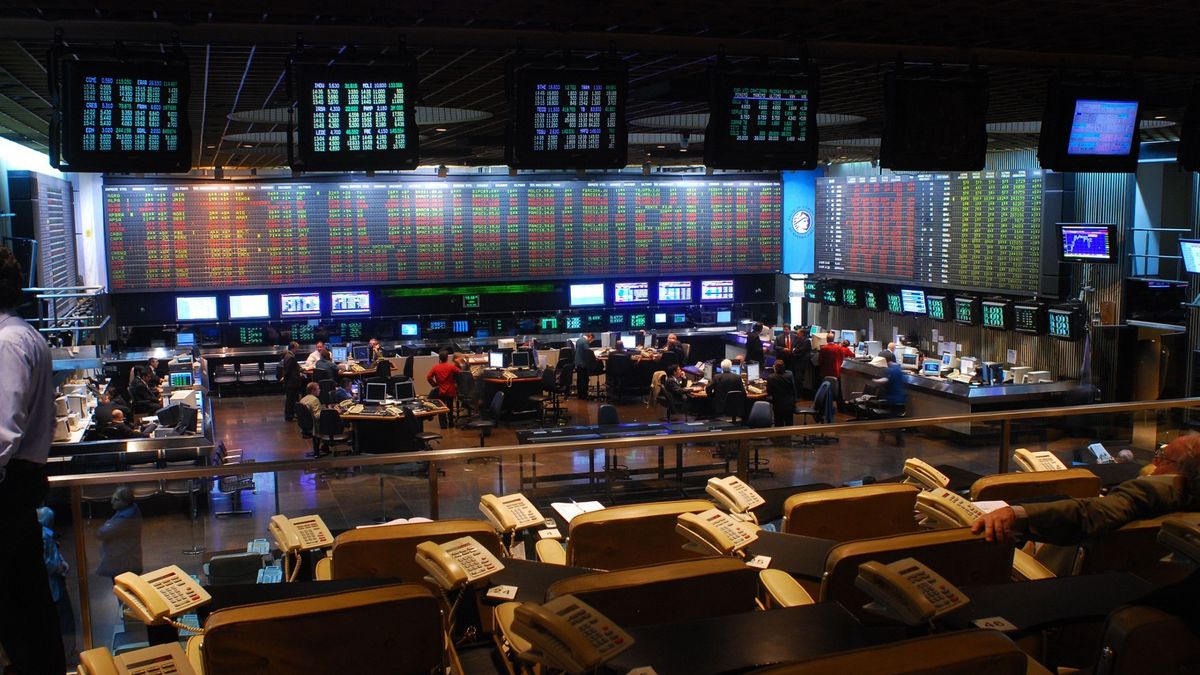Pressured by the collapse of oil and the very negative performance of emerging markets, the decline in Argentine papers on the New York Stock Exchange was led by South Gas Carrier (-6.9%); Cresud (-6.4%); Vista Oil & Gas (-6.2%); Pampa Energia (-5.3%); and Edenor (-4.3%). The only gain of the day was recorded by Corporación América (+0.9%).
In the Buenos Aires stock market, meanwhile, the leading stock index S&P Merval sank 4.5% to 84,955 points, which represents its biggest daily drop since last November, also conditioned by the drop in the CCL dollar.
The most relevant declines of the day were recorded by the shares of Cresud (-9%); Pampa Energia (-7.4%); South Gas Carrier (-7%); Cablevision (-6%); YPF (-6%); and Transportadora de Gas del Norte (-5%).
The volume in shares grew 7% to $1,324.5 million, representing 26% of the traded in equities. Thus, the remaining 74% of the total was operated on Cedears, whose daily amount dropped 19% to $3,750.4 million.
“The fall in the financial exchange rate has a direct effect on the drop in the Stock Market, and today we must also add the strong fall in emerging markets, especially in paper related to energy. It is also true that none of the quarterly balance sheets of Argentine companies brought positive surprises“, commented to Ambit Rafael Di Giorno, director of Proficio Investment.
The day took place in a climate of investment uncertainty in the short term, when the Government seeks legislative endorsement of an agreement with the IMF to refinance millionaire debt and the differences in President Alberto Fernández’s coalition are exposed.
The senators began to discuss this Monday the understanding with the international credit organization in commission, in search of an opinion that allows its treatment on Thursday, just five days before the country must face some 2,800 million dollars before the IMF. The Minister of Economy, Martin Guzman, defended the project before the Budget and Treasury Commission and He stressed again that a “no agreement” scenario would have undesirable effects in exchange and inflationary terms.
The Government bets to vote in the Senate on the agreement with the IMF next Thursday, for which a new job of “poroteo” between its own and others is already under way.
Likewise, the dance agreement must have the approval of the agency’s board of directors, which is expected to occur immediately after the sanction as law from Congress. “The approval of the agreement with the IMF in Deputies moves us away from a disruptive scenario and the greater liquidation of agriculture left better prospects in terms of foreign exchange accumulation”, said Personal Portfolio Investments (PPI). He added that “However, the government’s latest measures in the agro-export sector will probably have an impact on foreign exchange earnings.”
On the other hand, the market added another obstacle since the government will raise the withholdings in the next few hours to flour and soybean oil, according to official sources confirmed to Ámbito, after close the registry of exports to these products on Sunday, which created a climate of discomfort among investors, along with the sector of agriculture.
In international markets, the oil sank this Monday to a floor in almost two weeksas diplomatic efforts between Ukraine and Russia appeared on track to end the conflict, which would boost supplies, at a time when China’s travel ban casts doubts on demand.
“Internationally, we will continue to be very attentive to the conflict between Russia and Ukraine, and its repercussions for the supply of energy and other ‘commodities’, given that they can represent good opportunities for local companies that are linked to the supply of these”, PPI noted.
London Brent oil futures fell $7.11, or 6.3%, to $105.56 a barrel. Meanwhile, US WTI crude fell $7.82, or 7.2%, to $101.50 a barrel.
“Oil prices are reflecting bearish sentiment stemming from expectations of progress in the latest round of negotiations between Russia and Ukraine,” said Kaushal Ramesh, an analyst at energy analytics provider Rystad Energy.
Talks between Russia and Ukraine started on Monday and communication between the two sides is difficult but continues, Ukrainian presidential adviser and negotiator Mykhailo Podolyak said in a message on Twitter.
In this framework, Wall Street closed lower this Monday, a session in which the fall of the Nasdaq stood out, since Investors sold off high-growth and tech stocks ahead of this week’s Federal Reserve meeting and expected interest rate hikes.
Shares of Apple Inc fell after its supplier Hon Hai Precision Industry Co Ltd, known as Foxconn, suspended operations in Shenzhen, China, amid rising COVID-19 cases.
This Tuesday will begin the two-day meeting of the Fed that, as expected by the market, will culminate with the announcement of a first increase of 25 basic points in the reference rate. It would be the first retouch since 2018 and another 5 increases are estimated for the rest of the year. “The announcement comes in a context of high volatility, with the 10-year Treasury Bond rate jumping up to 2.14% at the start of the week, its highest level since July 2019 in line with rising inflation expectations,” they noted from PPI.
Bonds and country risk
In the fixed income segment, and unlike stocks, bonds in dollars withstood the bad investment climate, and closed with disparity. between the climbs, The shortest bonds of both legislations with maturity in 2029 and 2030 appeared: they climbed up to 1.7%. The rest of the titles closed in negative territory, with drops of up to 1.8% (Bonar 2038).
Thus, the Argentine country risk, prepared by the JP Morgan bank, fell nine basis points to 1,807 unitsafter posting an all-time high of 1,991 units last week.
After the recent improvements, the bonds “were put in tune with a liquidation cash (CCL) that pierced the 200 pesos. However, there is still a way to go, so the bonds should rise more, or the financial dollars rebound to be in line with the bonds,” said Roberto Gereto of Fundcorp.
For their part, sovereign dollar-linked bonds traded mixed, with falls of 0.2% and 0.2% for TV22 and TV23, respectively, and a rise of 0.2% for T2V2.
Finally, with the market waiting for a new exchange of the TX22 to be announced this week (there is still 46% of the outstanding, mainly in private hands), and the inflation data for February (it will be known this Tuesday), bonds in pesos with CER adjustment operated without changes in the short section and demanded in the long section, especially the Discount (+0.7%).
Source: Ambito
David William is a talented author who has made a name for himself in the world of writing. He is a professional author who writes on a wide range of topics, from general interest to opinion news. David is currently working as a writer at 24 hours worlds where he brings his unique perspective and in-depth research to his articles, making them both informative and engaging.




